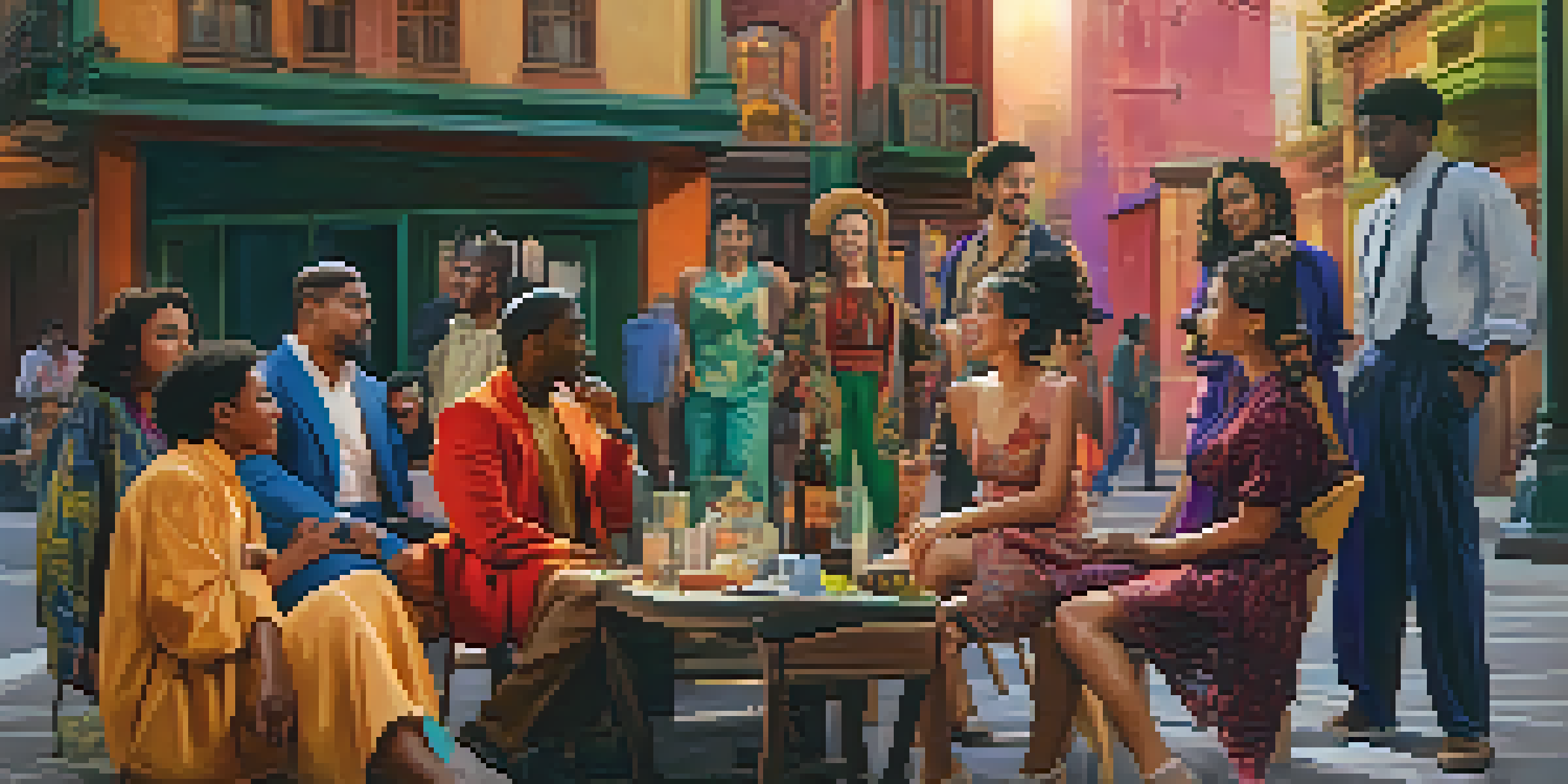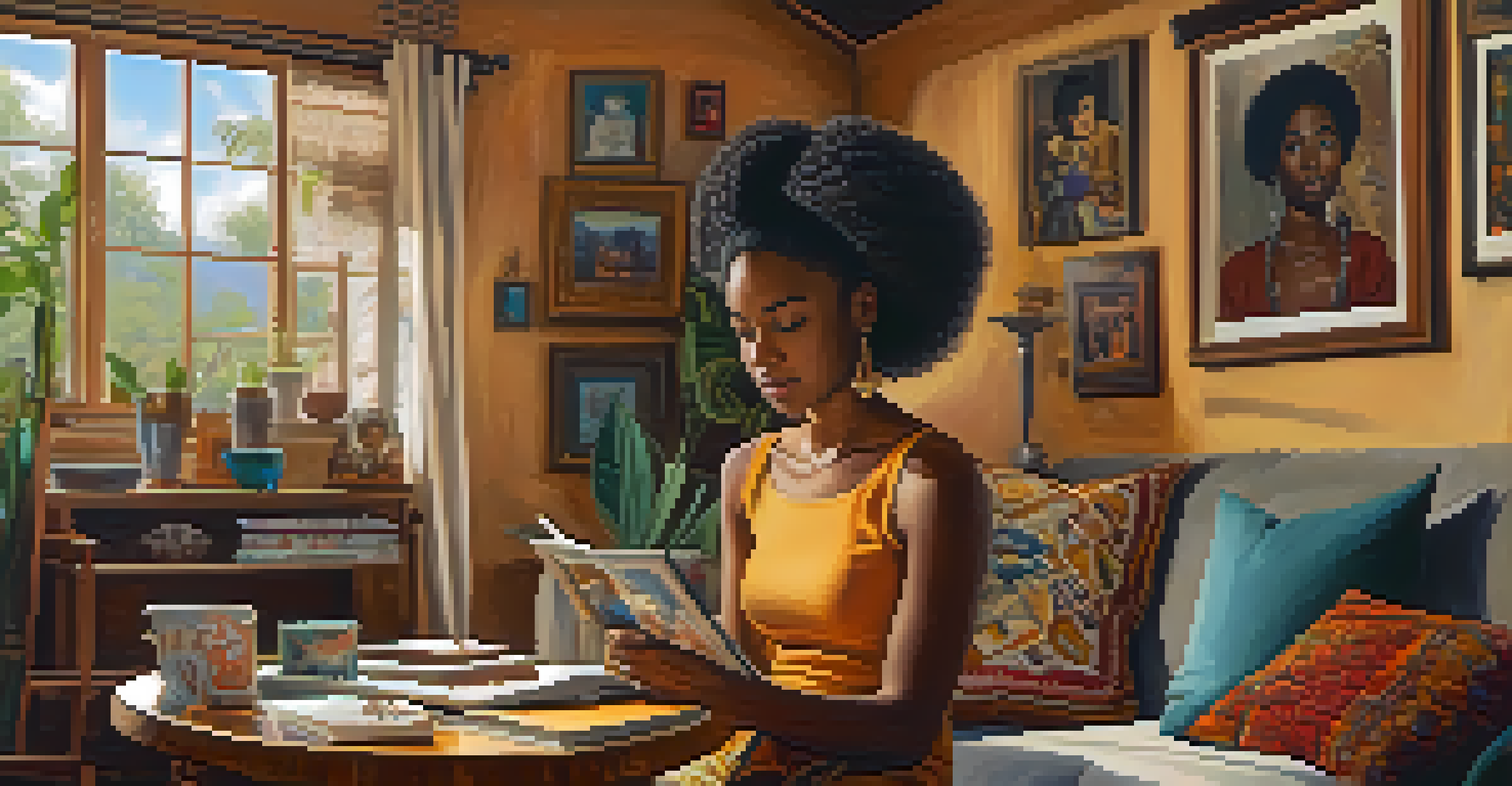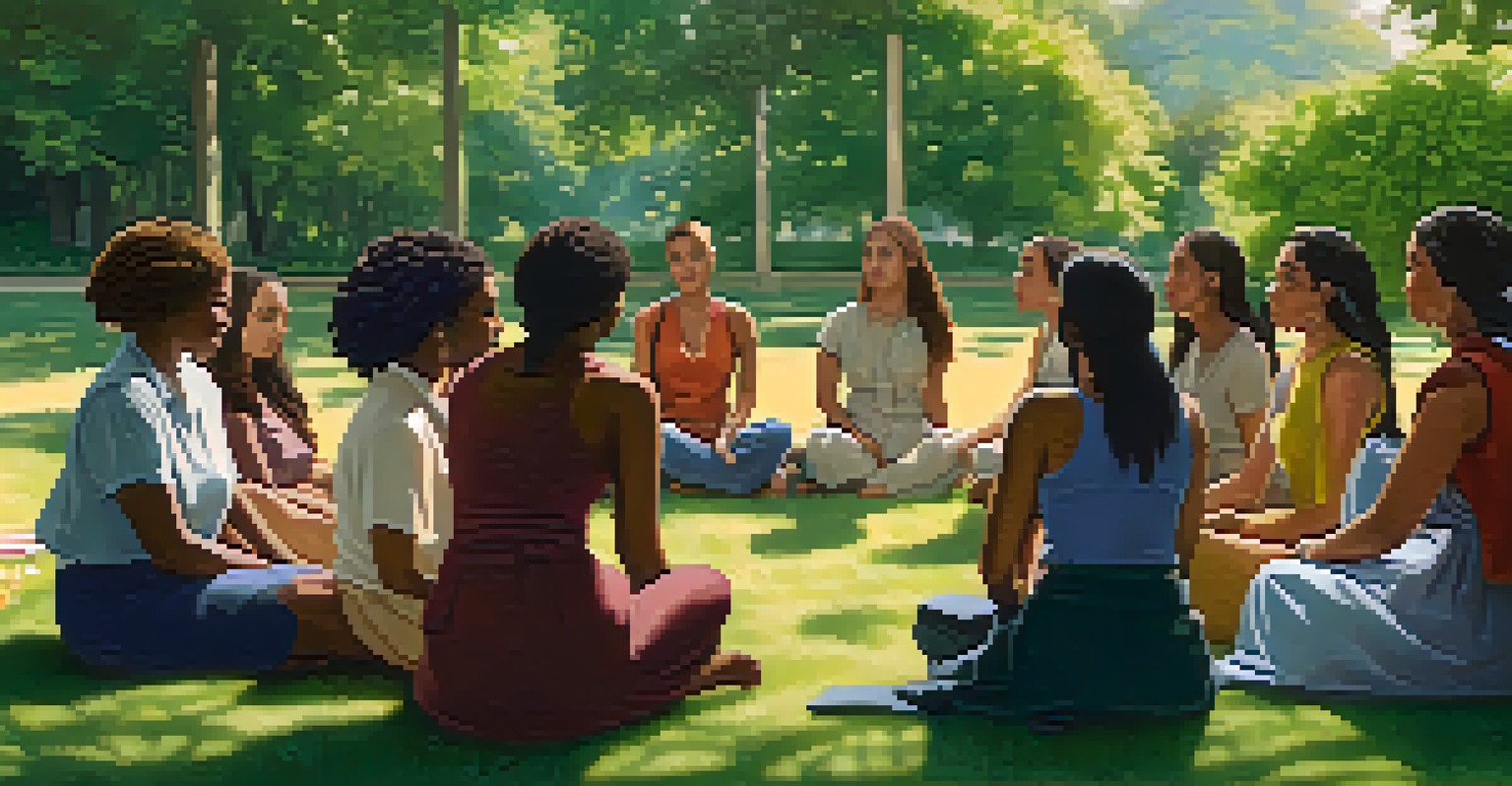The Intersection of Race and Gender in Film Narratives

Understanding Race and Gender in Film Contexts
At the core of film narratives, race and gender play pivotal roles in shaping characters and stories. These elements often dictate how audiences relate to and perceive the characters on screen. By understanding the historical context of race and gender in cinema, we can better appreciate the layers of complexity in storytelling.
Representation matters. It’s about making sure that everyone has a seat at the table and that we’re telling stories that reflect the diversity of our world.
Films have long reflected societal norms and biases, often perpetuating stereotypes related to race and gender. For instance, early Hollywood favored white male protagonists, sidelining women and people of color. This trend has gradually shifted, but the remnants of these biases can still be seen in contemporary films.
Recognizing the intersectionality of race and gender allows us to analyze how these identities influence character development and plot progression. When filmmakers prioritize diverse narratives, they contribute to a richer, more inclusive representation of society.
Historical Representation: A Shifting Landscape
Historically, film has often marginalized the voices of women and racial minorities. For example, the 'Damsel in Distress' trope frequently relegated women to supporting roles, while men took center stage as heroes. This dynamic not only reflects societal attitudes but also reinforces them, making it crucial to examine how these portrayals have evolved.

As we progressed into the late 20th century, filmmakers began to challenge these traditional roles, leading to more nuanced representations. Movies like 'Selma' and 'Hidden Figures' highlight the importance of telling stories from diverse perspectives, showcasing the struggles and triumphs of individuals from different backgrounds. This shift has begun to reshape audience expectations.
Evolving Representation in Film
Historically marginalized, race and gender narratives in film are increasingly showcasing diverse perspectives.
Today, the film industry continues to grapple with its past while striving for authenticity in storytelling. By giving a platform to underrepresented voices, filmmakers can create narratives that resonate on a deeper level with audiences, fostering empathy and understanding.
The Role of Intersectionality in Film Analysis
Intersectionality is a critical framework for understanding how various social identities, such as race and gender, interact and impact individual experiences. In film, this concept allows us to analyze characters more holistically, appreciating the complexities of their identities. For instance, a Black woman in a film may face different challenges than a white woman or a Black man, highlighting the importance of nuanced storytelling.
The stories we tell are the stories we become. Every narrative shapes our understanding of ourselves and others.
When films incorporate intersectional perspectives, they reflect a more accurate representation of society's diversity. This can lead to richer narratives that resonate with a broader audience. For example, films like 'Moonlight' explore themes of identity, sexuality, and race, creating a powerful narrative that speaks to the experiences of many.
By applying an intersectional lens, audiences can engage with films on multiple levels, gaining insights into the societal structures that shape individual lives. This deeper understanding encourages more meaningful conversations around representation in film.
Case Studies: Films That Challenge Norms
Several films have emerged as groundbreaking examples of how to effectively challenge traditional race and gender narratives. 'Black Panther' is often celebrated for its portrayal of Black culture and strong female characters, breaking away from stereotypical representations. This film not only entertains but also sparks discussions about identity and empowerment.
Similarly, 'The Farewell,' directed by Lulu Wang, offers a poignant look at cultural identity and family dynamics through the lens of a Chinese-American woman. By showcasing the protagonist's struggle between her heritage and her Western upbringing, the film resonates with many who navigate multiple identities.
Intersectionality Enriches Stories
Applying an intersectional lens allows filmmakers to create more nuanced characters and plots that reflect complex identities.
These films exemplify how challenging established norms can lead to richer, more authentic storytelling. They serve as reminders that diverse narratives can captivate audiences while also addressing important societal issues.
The Impact of Diverse Storytelling on Audiences
Diverse storytelling in film has a powerful impact on audiences, shaping perceptions and fostering empathy. When viewers see characters who reflect their own experiences and identities, it validates their existence and struggles. This representation is especially vital for marginalized communities, as it can influence how they see themselves in society.
Furthermore, films that embrace diverse narratives can challenge stereotypes and broaden audience perspectives. By showcasing the complexities of different identities, filmmakers encourage viewers to confront their biases and assumptions. This can lead to increased understanding and acceptance of diverse cultures and experiences.
Ultimately, the impact of diverse storytelling extends beyond entertainment; it plays a crucial role in societal transformation. By amplifying underrepresented voices, filmmakers contribute to a culture of inclusivity and understanding.
Challenges and Opportunities in Filmmaking
Despite the progress made in representing race and gender in film, challenges still persist. Many filmmakers face obstacles such as funding limitations, industry gatekeeping, and audience biases. These barriers can hinder the creation of authentic narratives that reflect diverse experiences.
However, opportunities abound as audiences increasingly demand representation and inclusivity in film. Streaming platforms have become a game-changer, offering a space for diverse storytelling that traditional studios may overlook. Independent films are thriving, showcasing unique perspectives that resonate with niche audiences.
Diverse Narratives Foster Empathy
Films that embrace diversity not only entertain but also challenge stereotypes and promote understanding among audiences.
By embracing these opportunities and addressing the challenges head-on, filmmakers can continue to push boundaries and create impactful narratives. The evolving landscape of cinema presents an exciting chance to redefine storytelling and enrich the cultural dialogue.
Conclusion: The Future of Race and Gender in Film
As we look to the future, the intersection of race and gender in film narratives will continue to evolve. The demand for authentic representation is growing, and filmmakers are beginning to respond by prioritizing diverse stories. This shift not only enriches the film industry but also reflects the changing dynamics of society.
The impact of these narratives extends beyond the screen, influencing how we understand and navigate our own identities. By showcasing the complexities of race and gender, films can foster empathy and challenge societal norms. The more we see ourselves in the stories told on screen, the more we can appreciate our shared humanity.

In conclusion, the intersection of race and gender in film narratives is not just a topic for analysis; it's a vital conversation that drives the evolution of storytelling. As filmmakers continue to embrace diversity, we can look forward to a future filled with richer, more inclusive narratives that resonate with audiences around the world.